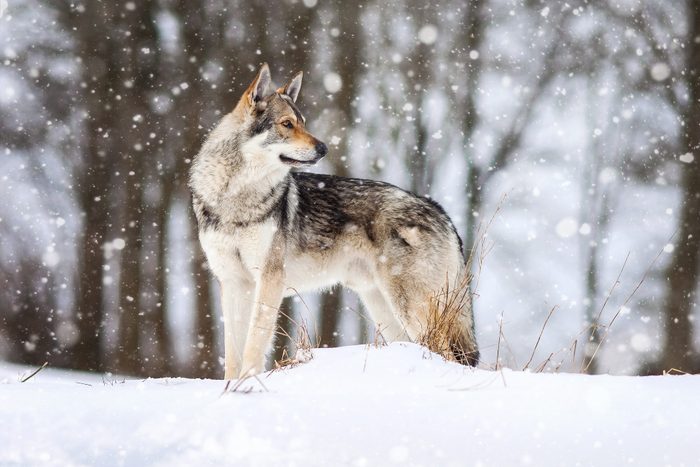
Wolf vs. dog
If dogs are man’s best friend, then wolves are the friend of a friend whose life story you know but who you’ve never met in person. There are striking similarities between the two animals, not limited to the obvious: They’re four-legged creatures with tails, fur, and faces that, wild or domesticated, make humans say “aww!” But wolf dog breeds don’t just look as cute as wolves; like all dogs, they descend from wolves.
Wolves and dogs are both members of the Canis genus, but there are some distinct differences. The wolf depends on itself to find food and shelter. The dog, which was domesticated an estimated 15,000 to 20,000 years ago, relies primarily on humans to meet its basic needs, including companionship and grooming. (Yep, those gorgeous coats require regular brushing and trips to the groomers.) Researchers from the National Human Genome Research Institute analyzed DNA from 161 dog breeds to get a clearer picture of how dogs and wolves relate to one another. While dogs that look like wolves certainly share DNA with their wild cousin, small dog breeds that don’t look like wolves—like the Pomeranian, shih tzu, Pekingese, and Lhasa apso—also share DNA with wolves, likely due to crossbreeding.
Regardless of the science, pet lovers are drawn to dogs that look like wild animals, including dogs that look like bears, dogs that look like foxes, and dogs that look like lions. After all, we’re getting the best of both worlds because we can cuddle with adorable teddy bear puppies and wolf dog breeds without worrying that there’s a mama bear or alpha wolf lurking around the corner. Read on for the dogs that look like wolves—but aren’t.
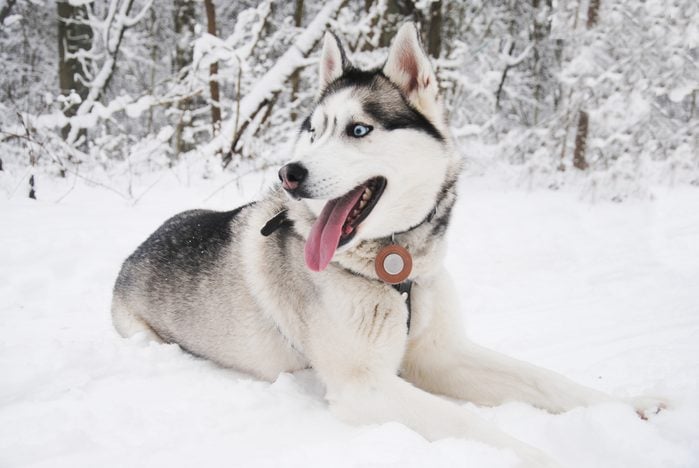
Siberian husky
Height: 20 to 24 inches
Weight: 35 to 60 pounds
Siberian huskies have earned a reputation for being our own version of reindeer, pulling sleds at unbelievable speeds over mounds of snow for great distances. But this wolf dog breed has also gained immense popularity as a playful, loyal companion for pet owners. Huskies are incredibly easy to train and will remain by your side no matter what. In a Science study published in the 2000s, researchers named the Siberian husky one of breeds most closely related to the wolf. But unlike their wolf ancestors, huskies like to howl instead of bark and feel a strong need to belong to a pack. They’re athletic and energetic, growing to be medium sized. If you’re looking for something smaller, check out these tiny teacup dog breeds that are absolutely adorable.
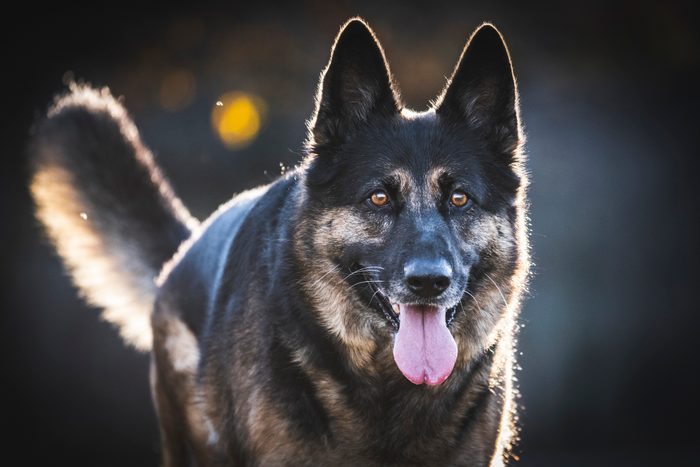
German shepherd
Height: 22 to 26 inches
Weight: 50 to 90 pounds
German shepherds typically serve as military and police dogs but have also secured a spot as one of the most popular German dog breeds. It’s hard to match the devotion and loyalty this dog has for its family. They are one of the most intelligent dogs out there, as they are able to learn quickly and excel under the stress of competition. They’re on the larger size, with some males tipping the scales at 90 pounds. German shepherds can exhibit aggression if they are afraid and not appropriately socialized, and because of their undying loyalty to and protectiveness of their family, they can tend to be aloof, at least initially, with other humans and animals. But generally, German shepherds are very loving toward families and good with children.
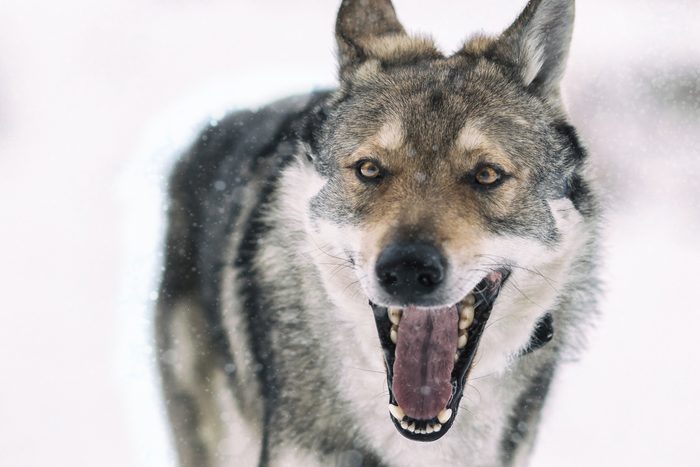
Kugsha
Height: 23 to 27 inches
Weight: 100 pounds
Talk about dogs that look like wolves! Kugshas have many wolflike features: pointed ears, large size, wide face, and a thick coat in shades of gray, white, and tan. Their coat is reminiscent of the gray wolf—and requires some upkeep. These aren’t among the dog breeds that don’t shed. Kugshas shed a lot and require brushing daily, but this purebred will make the best companion. Their sturdy, 100-pound physique makes them suitable for carrying heavy freight across long distances. Need a hand pulling your toddler in a wagon? The Kugsha has you covered. As they have only been recently domesticated, Kugshas are very independent creatures and require a ton of exercise, leading to possible damage if they aren’t able to get enough physical activity. If you have allergies, make sure you check out these hypoallergenic dog breeds.
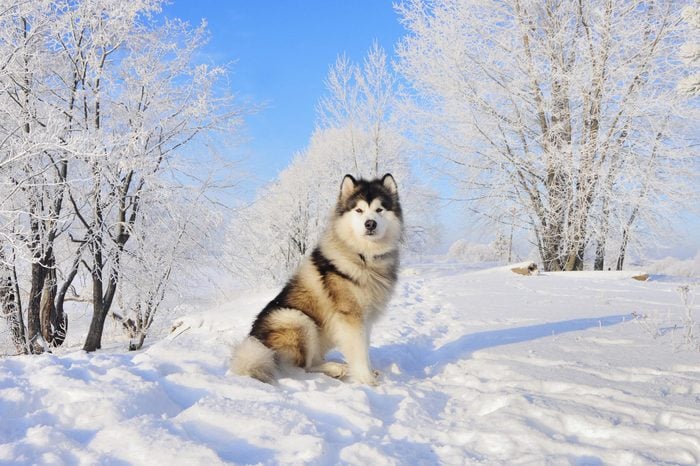
Alaskan malamute
Height: 23 to 25 inches
Weight: 75 to 80 pounds
Part of the husky family and another dog breed found closely related to wolves in the Science study, the Alaskan malamute uses pounds of pure muscle to haul hefty loads over long distances. Despite their size and strength, they are one of the most affectionate breeds on this list. Alaskan malamutes are truly gentle giants, but because they have a very strong prey drive, they are not typically recommended for families with other animals. They prefer to be around family and suffer from severe separation anxiety if left alone for too long. That’s a similarity when it comes to wolf vs. dog; wolves that live and raise their young in packs also share that trait. If you’re interested in just how many wolf genes your Alaskan Malamute has, some dog DNA test kits identify traits of wolves, village dogs, dingoes, and even coyotes.
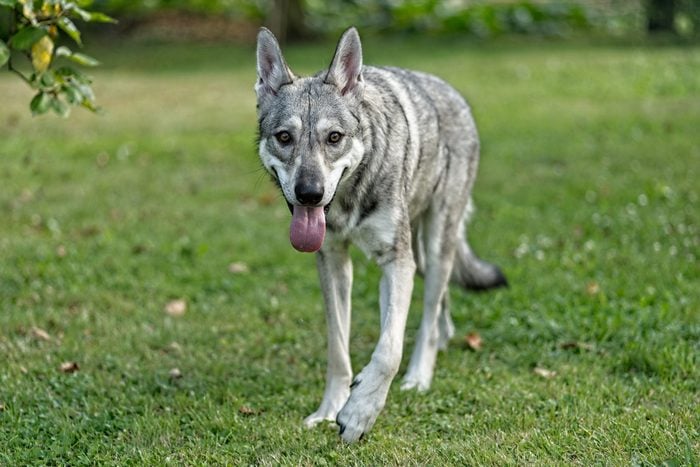
Saarloos wolfdog
Height: 24 to 30 inches
Weight: 65 and 90 pounds
The Saarloos wolfdog has a wolflike head shape and facial features, with a lean and athletic physique. Its robust and vigorous nature means it has a ton of endurance, requiring a variety of daily exercises. They can certainly hold their own against the fastest dog breeds, so a home with a vast property to roam and run is essential. Perfect for those who don’t want a lapdog, these pups prefer to sit at your feet. Similar to wolves, they avoid contact with strangers and foreign environments but are affectionate with their human families.
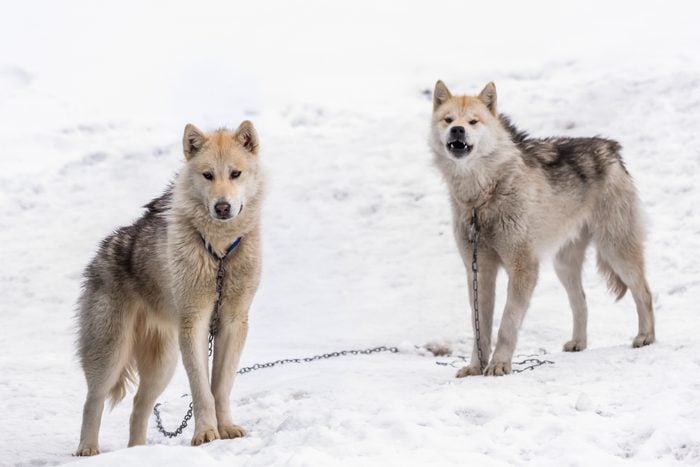
Northern Inuit dog
Height: 23 to 28 inches
Weight: 70 to 90 pounds
You may have seen the Northern Inuit dog breed recently on a popular television show on HBO. The rumors are true: This breed stands in for the dire wolves on Game of Thrones. And a Northern Inuit plays the part of Rollo in the television series Outlander. The Northern Inuit dog was bred in the United Kingdom with the idea of having a domesticated working dog that resembles a wolf. Although they have been bred to be tame, these dogs are not for an inexperienced canine owner. This breed, while very clever, remains stubborn and challenging to train, so it’s essential to find a dog obedience school staffed with canine behaviorists. Northern Inuits are best suited for families with more than one dog.
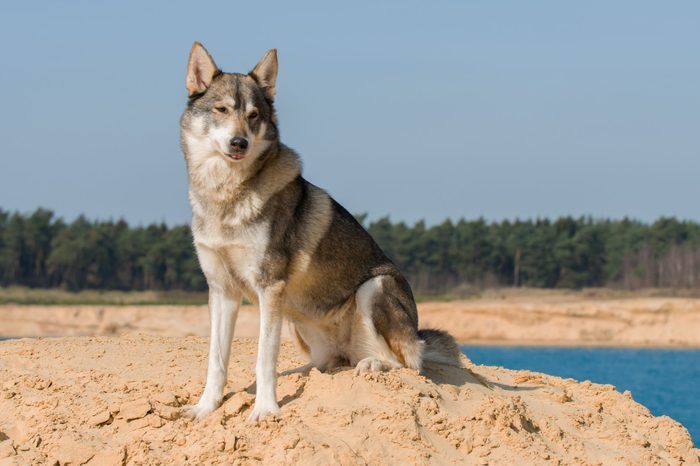
Tamaskan
Height: 33 inches
Weight: 100 pounds
Originating from Finland, the Tamaskan is one of the larger, lankier, and heavier wolf dog breeds. With beautiful yellow eyes and long legs, these dogs may come across as intimidating, but they are truly amicable creatures who will be there to give you kisses at any time of day. They love physical challenges but are generally more laid back than some of the other wolf-like breeds—except when left alone. Tamaskans can suffer from separation anxiety if they are by themselves for more than a few hours, which can lead to destructive behavior. See how long it’s OK to leave your dog home alone.
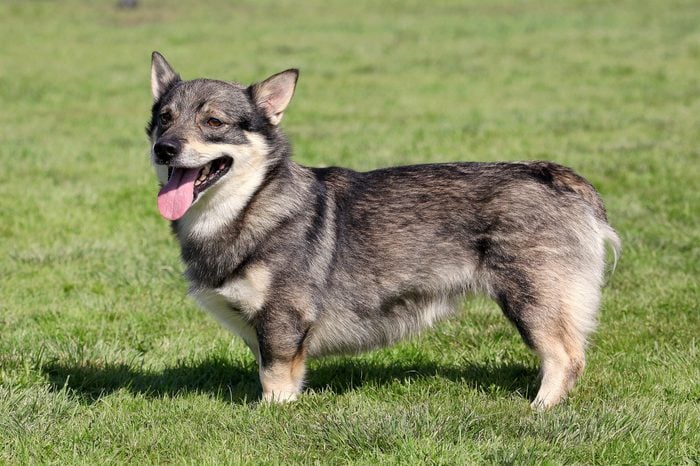
Swedish Vallhund
Height: 11.5 to 13.75 inches
Weight: 20 to 35 pounds
These tiny canines with a face that resembles a wolf are full of energy and cheer. While many other breeds on this list are built for athletics, Swedish Vallhunds will feel most at home lounging on the couch with you. They love to entertain themselves when bored but also love to entertain humans as well. This includes lots of barking at anything that moves, including a stray mosquito, a curtain blowing in the wind, or the UPS delivery driver. But have no fear, this behavior can be corrected with training at an early age. And as one of the dog breeds that live a long time, you’ll want to nip any bad manners in the bud because this cutie has a life expectancy of 12 to 15 years.
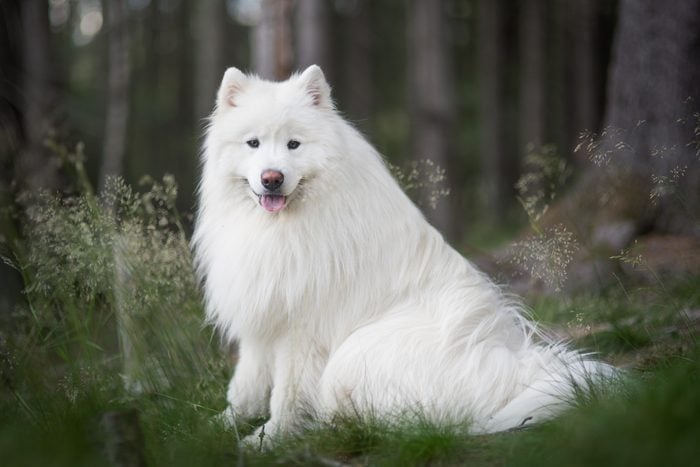
Samoyed
Height: 19 to 23.5 inches
Weight: 35 to 65 pounds
These fluffy pups resemble Arctic wolves with their bushy white fur and stature. Samoyeds began pulling sleds for the Samoyedic people in Siberia, but Queen Alexandra’s love for the breed back in the late 1800s spread their popularity around the world. Their trademark smiling faces and fluffy fur are cuddle worthy, but they can weigh as much as 65 pounds—not exactly lap dog material. That doesn’t stop samoyeds from side snuggling. They are very smart, love to be social, and are very affectionate. Like other working Russian dog breeds, Samoyeds need to be kept athletically stimulated and love to voice their feelings with lots of barks, but don’t be intimidated! The iconic (and adorable) Samoyed smile shows just how lovable they really are.
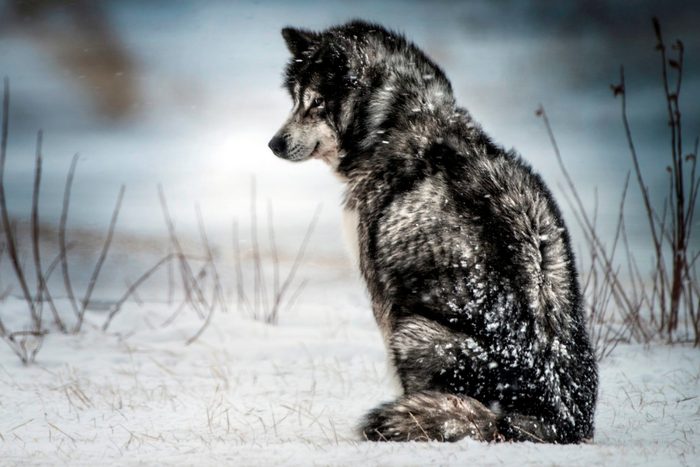
Canadian Eskimo dog
Height: 24 to 37 inches
Weight: 100 pounds
The Canadian Eskimo dog is strong, resilient, and disciplined after years of fending for itself in harsh arctic environments. They belong to the hefty class of working breeds, with a full-grown dog weight upwards of 100 pounds. They require more activity than other breeds, as they were bred to pull sleds and hunt, and they need supervision around young children and other pets due to their predatory nature (they typically don’t welcome the company of other dogs outside the family). But these canines exist solely as family dogs now, and can be very lovable pups. As one of the rarest dog breeds, there are less than 300 of them left in the world today.
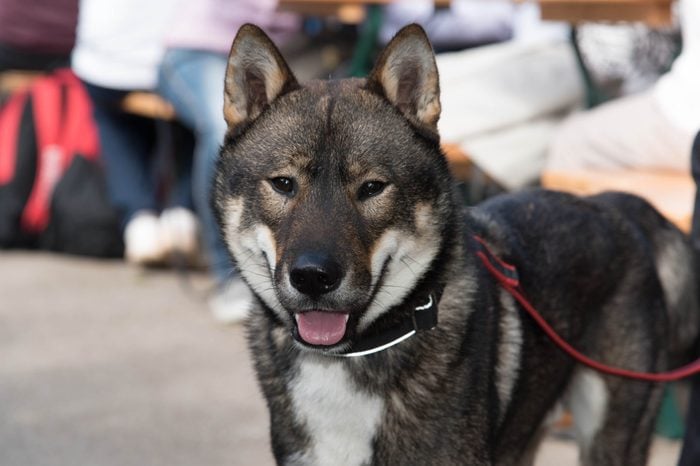
Shikoku
Height: 17 to 22 inches
Weight: 35 to 55 pounds
Shikokus are one of the smaller wolf dog breeds on our list, but they certainly make up for it in strength and energy. This rugged Japanese mountain dog breed was raised for hunting wild boar in the mountain ranges of Japan in the toughest of environments. Agility and endurance are hallmarks of the breed, so your pup will need plenty of activity to stay healthy and happy. If socialized from birth and reliably trained, Shikokus do very well with children. Their aggression is typically geared toward other dogs, but with proper training, they can be tamed.
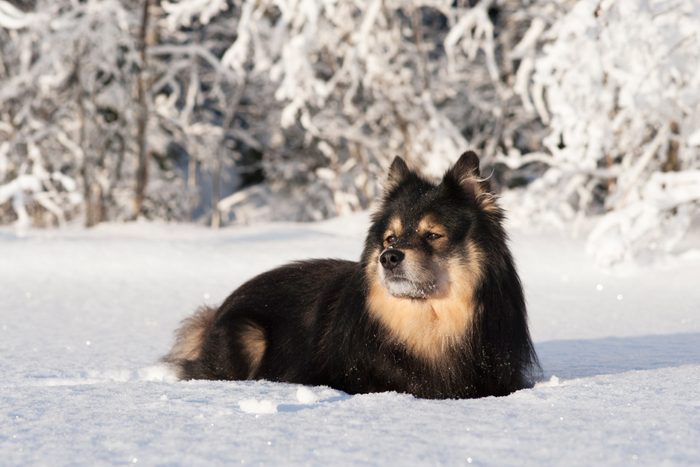
Finnish Lapphund
Height: 16 to 21 inches
Weight: 33 to 53 pounds
If you’re looking for a medium-sized dog breed that also loves children, the Finnish Lapphund may be perfect for you. They are extremely temperate and compassionate in nature, typically fleeing instead of fighting in a threatening environment. They do tend to be very vocal dogs and won’t hesitate to let you know what they’re feeling. This breed is incredibly curious, hardworking, and is comfortable with life outdoors. They are a great choice for first-time dog owners—unless you’re not a fan of barkers. In that case, you might want to look for a quiet dog breed that doesn’t bark too much.

Shiloh shepherd
Height: 8.5 to 10 inches
Weight: 100 pounds
The Shiloh shepherd was initially bred to expand the German shepherd breed. They look like German shepherds and are similar in size, but their soft and snuggly coats are similar to other fluffy dog breeds. The Shiloh shepherd typically has lower energy levels than the average German Shepherd. Still, as a descendant of flock guardians, they wouldn’t be content with less than a full day of activity and play. That’s not to say they don’t have downtime. This breed was bred to be the ultimate companion and is self-confident, courageous, very affectionate, and one of the most easygoing and calm dog breeds.
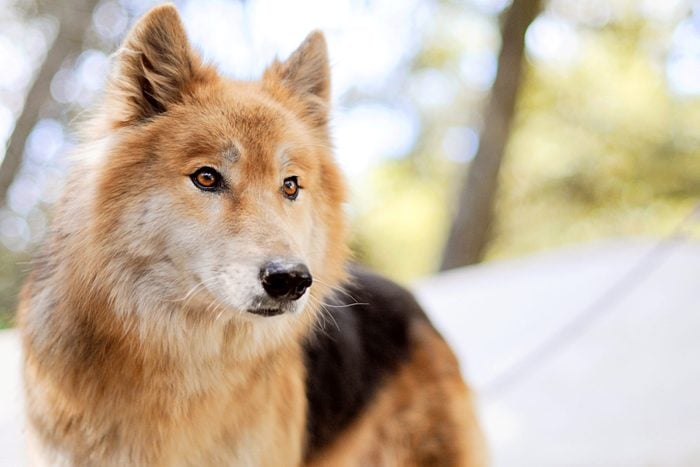
American Alsatian
Height: 30 to 33 inches
Weight: 110 pounds
Did you just do a double take? The American Alsatian is truly a dog that looks like a wolf, but unlike wolves, this breed is surprisingly calm, and its 110-pound frame fits right in with other gentle giant dog breeds that make great pets. A cross between an Alaskan malamute and a German shepherd, it was developed to be solely a devoted companion, not a working dog. The American Alsatian is super affectionate and overall pretty quiet, but it does need lots of room to run around in order to stay in good health.
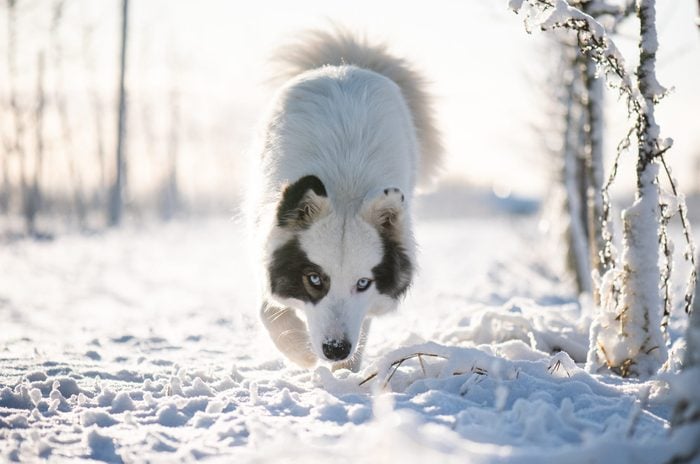
Yakutian Laika
Height: 21 to 23 inches
Weight: 40 to 55 pounds
Yakutian Laikas were first found in Siberia and used predominantly for pulling sleds and hunting. Their dense fur and striking eyes serve as a reminder of their wolf ancestry. This medium-sized breed is remarkably gentle, forming tight bonds with humans, especially children, but its friendly nature doesn’t diminish the need for socialization at an early age. The Yakutian Laika can be somewhat reserved but will never say no to a new friend. Although they do have sensitive noses and ears, their friendliness would hinder their ability to be a good guard dog.
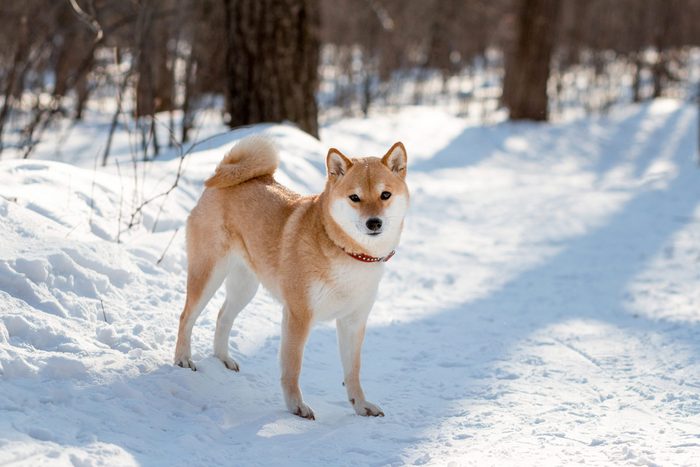
Shiba Inu
Height: 13.5 to 16.5
Weight: 27 to 23 pounds
It may look more like a large fox at times, but this is undoubtedly one of the wolf dog breeds. The authors of the Science study name it as one of the dogs most closely genetically linked to wolves. This ancient Japanese breed was once used for hunting, its ancestors surviving harsh mountain conditions. Today, Shiba Inu is the top companion dog in the country and has been growing in popularity stateside since it was introduced in 1954. Shiba Inus are affectionate toward family members and protective in nature, making them good guard dogs.
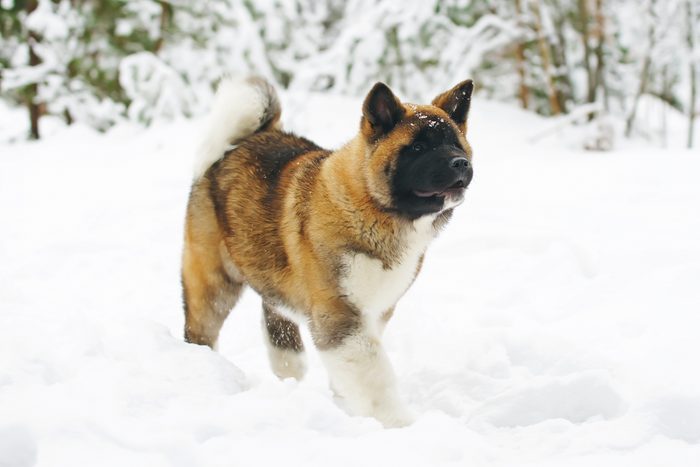
Akita
Height: 24 to 28 inches
Weight: 70 to 130 pounds
Like the Shiba Inu, the Akita isn’t as overtly wolflike as others on this list. But also like the Shiba Inu, this Japanese breed has been named by researchers as one with a close genetic link to wolves. Big-boned and burly, with a thick coat and large head, the breed can get as large as 130 pounds. They’re full of energy, and while they don’t get along well with other dogs, they’re protective of and loving toward family. This is a good breed for pet owners willing to properly train the pet to prevent aggression.
Sources:
- Cell Reports: “Genomic Analyses Reveal the Influence of Geographic Origin, Migration, and Hybridization on Modern Dog Breed Development”
- Trends in Genetics: “Molecular evolution of the dog family”
- Nature Communications: “Ancient European dog genomes reveal continuity since the Early Neolithic”
- Nature Reviews Genetics: “Animal domestication in the era of ancient genomics”
- Science: “Genetic structure of the purebred domestic domestic dog”
- American Kennel Club: “Dog Breeds”
